How to properly grow melon in the north?
Southern plants are moving further and further to the northern dachas, now melon cultivation is possible in the Urals and Siberia. The main thing is not to be afraid, not to doubt, but just get down to business. You grow cucumbers pumpkin, zucchini - the melon is a little more capricious, but the pleasure of a sweet juicy slice will pay off all the efforts. Of course, in the north, caring for southern crops is more difficult than in the Kuban - you have to work hard to get a decent harvest. Don't hesitate, buy seeds and get down to business.
Seed preparation for sowing
If you want to learn how to grow melon outdoors, get quality seeds first. The choice of a variety for residents of the southern regions depends only on the preferences of the gardener: in a long and warm summer, any variety will have time to develop well and bear fruit. If the summer in your area is short and cool, choose locally selected seeds, they are already adapted to the unfavorable climate.
Be sure to pay attention to the ripening time of the fruits: the faster the harvest ripens, the more melons will be on your table. Do not chase large-fruited species, they reach the desired size too slowly, and no great care will speed this process.
There are some good varieties that can be grown in the cool northern summers:
- Cinderella;
- Early sweet;
- Gold of the Scythians;
- Collective farmer;
- Ethiopian;
- Sweet pineapple.
Advice
Do not grow melons from discounted seeds that are nearing their expiration date. Fresh sowing material produces more friendly seedlings and, as a result, is more profitable.
A good harvest can be given by seedlings from melon seeds that your neighbor has grown on his site. The plant has already adapted to the local soil, weather conditions and transferred these properties to the future generation. There are two subtleties in this matter: firstly, the variety should not be hybrid. The second condition: the fruits must fully ripen in the garden. If the melon is picked green and left to ripen indoors, there is no guarantee that the seeds will be viable.
Crops on the windowsill
In the warm zone, many gardeners plant the melon with seeds directly on the garden bed. In cold regions, grains planted in open ground will not have time to develop and bear fruit. On average, seedlings, if properly cared for, are ready for planting a month after sowing the seeds. If the weather is right for your area in early June, start sowing in late April. Soak the seeds in warm water and leave for several hours at a temperature of about 25⁰.
Advice
You can use the experience of our great-grandmothers. They wrapped the seeds in a damp cloth and put them in their underwear. The warmth and energy of your body will serve as a good stimulant for the quick awakening of fetuses.
You can purchase seedling soil melons or prepare the composition yourself. Fill a bucket ¾ with humus and ¼ with garden soil. Add three more components to the soil:
- potash fertilizer - 1 tbsp. the spoon;
- nitrogen fertilizer - 1 tbsp. the spoon;
- phosphorus fertilizer - 3 tbsp. spoons.
If you are against chemical fertilizers, add a teaspoon of potassium sulfate and a glass of ash to the ground. It is better not to throw the seeds on the soil surface, but stick them sideways into the ground and sprinkle 3 cm of soil.
In order for young melons to take root well, it is advisable to minimize trauma to their root system. Peat pots with a diameter of about 10 cm are ideal. If there are no suitable cups, take a plastic bottle, make drainage holes in the bottom, and cut the neck off. Each plant needs to be allocated an individual “apartment”.If you are not sure about the quality of the seeds, you can plant 2 seeds in each container, but then it is advisable to remove the weaker shoot.
Growing seedlings
Shoots have appeared in the cups, now they need to turn into good strong seedlings. What kind of care do your pets need? Almost the same as any other seedling.
Remember a few points to keep in mind.
- Watering. Keep the soil moist at all times.
- Plenty.
- Comfortable temperature.
- Adequate lighting.
- Top dressing.
Melon does not tolerate tightness, so arrange the cups so that the leaves of neighboring plants do not touch each other. With a lack of light, the seedlings will begin to stretch. In order for the seedlings to grow strong, the daylight hours must last at least 12 hours. If the sun rarely looks in the window, turn on a fluorescent lamp over the landings. Monitor the air temperature, but do not overheat the seedlings. A comfortable temperature for her is + 25⁰, and above + 30⁰, plants will begin to die.
There will not be enough food in the pot for the entire period. 2 weeks after sowing, you need to dilute the complex fertilizer in water and feed the seedlings. Water the plants immediately afterwards. Repeat the procedure a few days before planting in the ground. In addition, do not forget to loosen the soil in cups - that is the whole care of the seedlings of the southern culture.
At 3 weeks of age, the seedlings should be gradually taught to live outdoors. Take the pots out to a loggia or veranda, where the temperature is about + 17⁰ during the day and drops to + 14⁰ at night. Every evening, listen carefully to the weather forecast, so that before a cold snap, remove delicate plants in the warmth. Melon cannot stand the cold at all, and all your labors can perish overnight.
Landing in open ground
It is better to prepare a place for melons and gourds on the ground where legumes, cabbage or potatoes grew last season. The site must be sunny, protected from drafts. Create a warm bed for your melons: Dig a trench and fill it with humus and hay, straw or fallen leaves. Pour in fertilizers with a predominance of nitrogen, pour hot water, put a layer of soil on top and cover with a black covering material. Plant debris will start to rot and the soil will always be warm. It's good if you have a small ridge above the trench for planting young plants.
When the ground at a depth of 10 cm warms up to + 18⁰, dig holes 10 cm deep with a row spacing of 120 cm on the ridges, and 70 cm between the plants. Fill the holes with compost and spill well with warm water. You need to install 2 peat pots in each hole. Melons will not be cramped, their lashes spread along the ground, and your task is to direct them in different directions. If the seedlings are growing in plastic cups, try to remove the entire clod so that the roots remain in the soil. It is better to just cut containers made from bottles into 2 halves, by the next planting season you will accumulate new containers.
Well-developed seedlings should have a thick stem and 3 to 5 true leaves. For the lashes to branch well, pinch the main shoot over the fifth leaf. Plant the plants so that the lump of soil is a couple of centimeters above the surface of the ridge. The soil must be mulched right away, in addition to protecting against weeds and retaining moisture, a thick, loose layer will give the roots additional warmth. While the weather is cool, arrange for a woven or film shelter.
To prevent the soil from cooling too much on cool nights, lay "heat accumulators" on the garden bed. Take stones or fill dark plastic bottles with water and place them near the seedlings. During the day, the sun will heat the stones, and at night they will give heat to the earth. If the weather is cloudy and cold, heat the materials on the stove and spread them under the plants in the evening.
Melon care in the garden
The melon has large juicy fruits, but it does not feel a great need for moisture.Powerful roots go into the lower layers of the soil to a depth of more than a meter and suck in water from there. Make sure that the soil does not dry out, moisten it to a sufficient depth. And now the secret to getting especially sweet fruits. Once they grow to the correct size, stop watering completely. The plant will receive water for its existence from the deep layers of the earth, and more sugar substances will be deposited in the melons.
Immediately after planting, the melon needs a lot of nutrients for the development of lashes and leaves. A week after planting, when the plants take root, you need to water the plantings with a solution of ammonium nitrate (20 g per bucket of water). After 2 weeks, feed them with complex fertilizers, after another half a month, repeat the procedure. Treat your pets with wood ash from time to time, it makes the fruit sweeter.
Don't let the melon spend a lot of energy on the green mass, leave no more than 2 main shoots. The plant can bloom very profusely, but many fruits will not ripen on it. Leave no more than 6 ovaries on the bush. If a shoot is not budding, cut it off to conserve strength for fruit development. Fasten long lashes to the ground with hairpins or staples so that the wind does not flutter them.
Advice
If you notice that only one fruit grows well on the bush, and the rest hardly increase, then the plant lacks nutrients. Feed your melon with compound fertilizer.
Summer days in the north are long, and some varieties, such as Kolkhoznitsa or Ethiopka, cannot tolerate bright light for more than 12 hours a day. Organize a blackout with thick fabric and cover the plants when half a day has passed after sunrise. Turn the fruit over to the other side from time to time to keep the fruit growing evenly. Do not let the resulting melons lie on the ground: they can rot from moisture before they have matured. Place fragments of slate or other material under them that does not rot and does not collect moisture. The ripeness of the fruit can be determined by its bright yellow color and specific smell.
Output
Many varieties of melon grow well and bear fruit outdoors in the Urals and Siberia. Try to choose varieties with a short ripening period and small fruits, so that they have time to ripen in the garden before the cold weather. The Kolkhoz Woman and Ethiopian melons are considered the most resistant to cold. In the northern regions, not every summer is warm, and despite all the efforts and excellent planting care, you may be left without a juicy treat. To keep your melon on the table every year, grow more seedlings from the seeds and plant a few bushes in the greenhouse.
Do not try to plant a southern crop in open ground in northern regions. At best, you will admire the large yellow flowers, and at worst, only lush greenery, and you will not wait for the fruits. Planting melons from seeds in cold areas is only possible through seedlings. Even if the weather is warm, equip shelters to protect the plants from death in the event of a cold snap.
Ravens love treats just as much as humans. Use a scarecrow, netting, mirror shards or electronic devices to chase away feathered sweet teeth from ripening fruits. The main care consists of the usual procedures for any gardener: watering, feeding, pinching the tops of the lashes.
Do not be lazy to master the cultivation of new crops, they will add variety to both your menu and the design of your summer cottage.
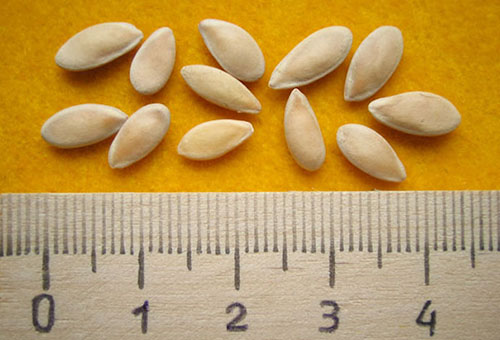
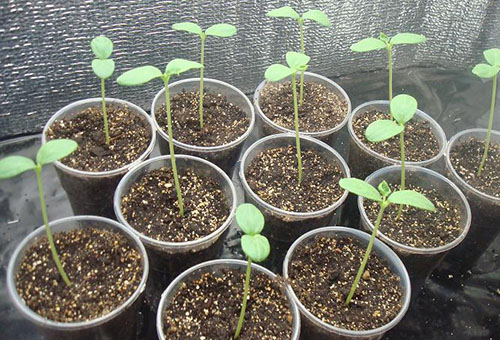

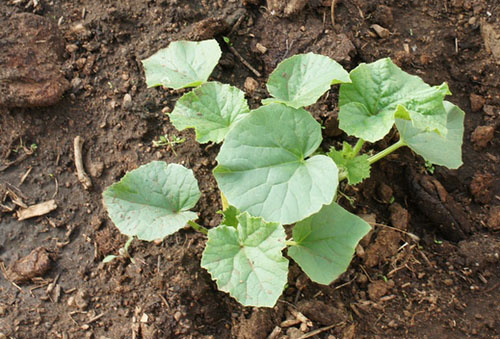
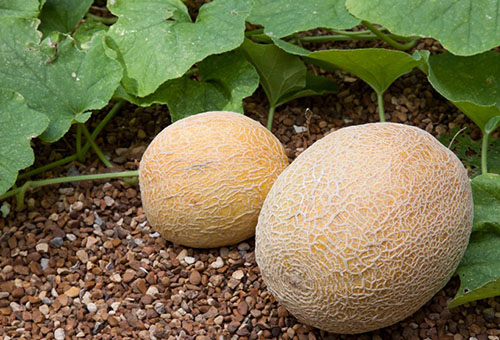
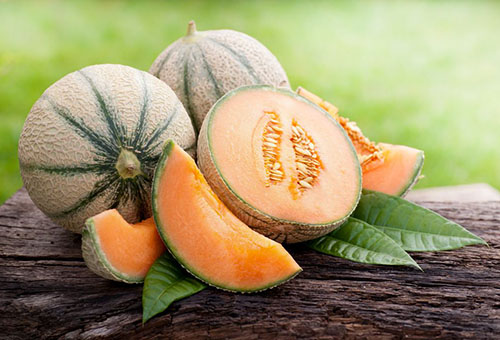



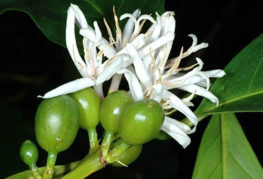
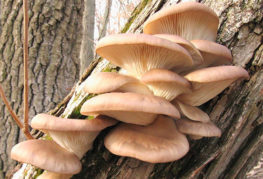

and will be published shortly.